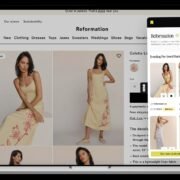The global fashion industry operates through five distinct manufacturing segments, each catering to specific These five most common manufacturing categories include high fashion, bridge, better, moderate and mass market. From haute couture craftsmanship to mass-market scalability, these groups reflect evolving consumer demands, sustainability mandates, and technological innovation. Here’s how manufacturers are adapting to dominate their niches.
-
High Fashion/Designer Apparel: The Luxury Vanguard
High-fashion manufacturers produce exclusive, premium-priced garments for luxury houses like Gucci (owned by Kering, $30B market cap) and Chanel. These items retail for $1,000+, emphasizing bespoke craftsmanship, rare materials, and limited editions.
- Example: LVMH’s Louis Vuitton employs 128 artisans at its Métiers d’Art workshops to handcraft leather goods, contributing to its $342B market cap.
- 2025 Trend: Sustainability drives innovation, with Prada’s Re-Nylon line upcycling ocean plastics into luxury accessories.
-
Bridge Market: Accessible Luxury
Bridge manufacturers blend high-end design with moderate pricing ($500–$1,000), targeting aspirational shoppers. These brands act as a “bridge” between luxury and mass markets.
- Examples: Michael Kors, Coach, and DKNY (Donna Karan’s diffusion line).
- Case Study: Fossil Group’s licensed partnership with Emporio Armani boosted watch sales by 22% in 2024 by leveraging Armani’s branding with Fossil’s production scale.
-
Better Market: Elevated Quality, Mid-Tier Pricing
Positioned between bridge and moderate segments, better-market manufacturers focus on quality fabrics and timeless designs at $300–$500.
- Examples: Anne Klein, Jones New York, and Calvin Klein’s better lines.
- Strategy: These brands prioritize durability over trends, appealing to professionals seeking workwear longevity.
-
Moderate-Priced Market: Balancing Trends and Affordability
Moderate manufacturers target budget-conscious shoppers with trendy, accessible styles under $300.
- Examples: Zara (Inditex, $161B market cap), Gap, and Express.
- Innovation: AI-driven trend forecasting tools, like Mytheresa’s 2024 platform, cut design-to-production time by 30%, enabling rapid response to viral trends.
-
Mass Market: High Volume, Low Margin
Mass-market manufacturers prioritize scalability, producing affordable apparel (under $100) for global retailers.
- Examples: H&M, Shein, and Walmart-exclusive lines.
- Challenges: Fast fashion faces EU sustainability scrutiny, with mandates requiring 50% textile recycling by 2026. Brands like Primark now use blockchain to track recycled materials.
Market Dynamics and Recent Shifts
| Segment | 2025 Growth Driver | Key Challenge |
| High Fashion | Gen Z demand for exclusivity | Rising material costs (+18% YoY) |
| Bridge | Hybrid luxury collaborations | Brand dilution risks |
| Better | Corporate wardrobe demand | Competition from rental platforms |
| Moderate | TikTok-driven microtrends | Tariff disputes in Asian markets |
| Mass Market | Resale market integration | Fast-fashion bans in France/Spain |
Future Outlook
- Tech Integration: LVMH’s AURA blockchain ensures ethical sourcing across 74% of its supply chain.
- Circular Economy: Tapestry’s “Re-Coach” initiative upcycles 40% of leather waste, aligning with EU regulations.
- Metaverse Expansion: Gucci’s virtual sneakers generated $12M in NFT sales, merging digital and physical retail.





